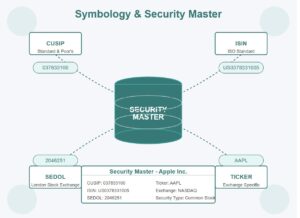Home Education center Tracking Error Demystified: A Guide for Investors
Tracking Error Demystified: A Guide for Investors
Table of Contents:
Understanding Tracking Error (TE) in Direct Indexing
Tracking error is the measure of how closely a portfolio follows its benchmark. It essentially quantifies the divergence in returns between your portfolio and the index it is designed to mirror. For instance, if your goal is to replicate the S&P 500, the TE would indicate how much your portfolio’s returns deviate from the S&P 500’s performance.
What Does It Really Mean?
Tracking error is calculated as the standard deviation of the differences between a portfolio’s returns and its benchmark’s returns over a specified period. A lower value signifies a closer match to the benchmark, while a higher error indicates greater deviation. For example, if your portfolio has a TE of 1%, it means that its returns have typically varied within a range of plus or minus 1% of the benchmark during the given period.
It’s important to note that while a small tracking error is generally desirable, especially for those aiming to replicate passive investment strategies. It is not the same as a difference in returns. Tracking error captures the volatility of the difference in returns, including deviations within a specific time period. For example, two portfolios might have similar returns over a year. However, one can have a higher tracking error due to the swings or volatility of those returns compared to a benchmark.
Ex-Post vs. Ex-Ante
When evaluating tracking error, it’s essential to understand the difference between ex-post and ex-ante measures. Ex-post is a backward-looking calculation, assessing how well a portfolio tracked its benchmark in the past. It’s primarily used for reporting purposes. Ex-post gives a summary of historical performance. For example, one might use ex-post to explain to a client how closely their portfolio matched the S&P 500 in the previous year.
On the other hand, an ex-ante is a forward-looking estimate, projecting the potential future deviation of a portfolio from its benchmark. This calculation is based on allocation differences and the covariances of the securities. It helps in portfolio optimization. This is because it uses current data without overfitting to historical returns. Using ex-ante allows us to create a portfolio that is likely to perform well in the future, not just one that has done well in the past.
At Alphathena, our approach focuses on minimizing ex-ante tracking error during portfolio construction. This allows for more robust and reliable results going forward. We then use the ex-post tracking error to measure and report the historical effectiveness of our approach.
Related Pages
- The Art of Balancing Tracking Error and Investment Goals
- Direct Index Portfolio Construction: A Comprehensive Guide
- Core Concepts and Fundamentals for Direct Indexing
- Managing Concentrated Positions Through Diversification and Tax Efficiency
- Case Studies and Success Stories in Direct Indexing
- Tracking Error
Offer personalized experiences for every client at scale




